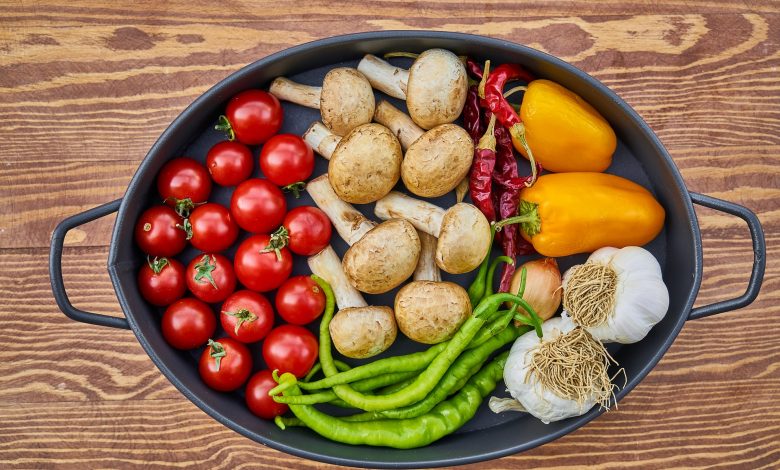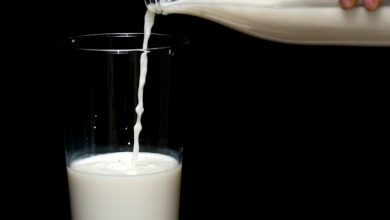
Your Guide To Determining Your Ideal Calorie Intake
An ideal weight is essential for an active and healthy life, and, therefore, determining the ideal calorie that your body requires daily is critical. The very basis of a good fitness plan is to get your diet correct. Understanding how many calories you are eating depends on the type of food you are consuming and its portion size.
There are ample online calorie intake calculators out there to help you ascertain your daily ideal calorie intake. Before you do that, however, it is better to delve deeper and understand everything you must about calories.
What are calories, and how many do you need daily?
A calorie is nothing but a measurement of how much energy a portion of food or drink holds. All meals, whether they have carbohydrates, fats, sugars, or proteins, possess calories. You must consume a certain amount of calories to live and perform.
How much energy your body craves for each day depends on a few factors, such as:
- Age – Growing children and teenagers need more energy.
- Lifestyle – How active or sedentary is your life? This question plays a huge part in determining how many calories your body needs.
- Size – Your weight and height play a significant role in energy consumption.
- Hormones – Hormones are chemicals produced by the body.
- Medicines – Some medicines that you consume daily can also affect your ideal calorie intake.
Why is it essential to monitor calorie intake?
Keeping a close check on your calorie intake is essential for weight management. Here is how it works:
One pound of fat is equivalent to approximately 3500 calories. So if you consume an excess of 500 calories each day, you will put on at least 1 pound per week. That makes it 52 pounds a year! Shocking, isn’t it?
If you like dining at Red Lobster, here is another interesting example that might make great sense to you. If you order the delicious Parrot Isle Jumbo Coconut Shrimp (forget about the cost for the moment!), you would be consuming 58 grams of saturated fat, which comes up to a whopping 1,160 calories!
Now that you know the secret of this high-calorie food, you can instead go in for a Peach-Bourbon BBQ shrimp and scallops so that you will be consuming no more than 28 grams of saturated fat and 585 calories.
If you are thinking how that matters, consider this – to make up for the 575 calorie difference, you will need to run 45 minutes to burn off those extra calories.

Factors involved in determining how many calories to consume
How many calories you must consume daily depends on factors such as whether you are trying to lose, gain, or maintain your weight. Other factors, such as your basal metabolic rate, activity level, and life stages (pregnancy, teen life, and childhood), play a significant role in determining the number of calories to be consumed every day.
Basal metabolic rate
Basal metabolic rate, also referred to as metabolism, is determined by your weight, age, body composition, and of course, gender. If you want to maintain a healthy weight, you must balance the number of calories you eat with the number of calories you burn each day.
The BMI calculator will help you find out if you are of sound weight or not.
Activity level
If you increase your activity level, you are simultaneously boosting the number of calories that you must consume to maintain your substance. An active person will need to consume 400 to 1,000 calories more each day in comparison to another of the same age, weight, and size who leads an inactive life.
While people leading a sedentary life do not move about much, active people move more, thereby using up the same energy amount as walking for three miles each day.
Other concerns
As mentioned before, growing children need to consume more calories since they require excess energy to create new cells. Similarly, pregnant women too must consume more calories due to their larger body size and the formation of new cells. Lactating women demand more calories to create enough milk for their babies.
Caloric balance to maintain weight
Caloric balance is the state you need to attain to maintain your weight. Caloric balance is consuming calories enough only to cover the calories that you use each day. If you consume more calories than what your body demands, you are bound to gain weight.
Likewise, if you eat fewer calories than what your body needs, you will lose mass. It is hence essential that you monitor your calorie intake and your weight to assess if you are consuming the right calorie amount. Any change in the weighing scale might lead to a caloric imbalance.
Caloric intake for men and women
You must be aware of your daily calorie requirements if you want to maintain your current weight. If you wish to amass or throw away those pounds, you must take the calorie amount mandated every day to maintain weight and subtract it by 500 (if you want to get rid of one pound per week) or add 500 (to put on one pound per week).
The College of Sports Medicine in America says that, while doing so, you must take care to see that the calorie intake is not less than 1,200 a day for adult females and at least 1,800 a day for adult males.
Required calorie intake for men
Men most certainly need more calories than women. Besides that, the age, body activity, and weight play a dominant role in determining the right calorie input for men.
Listed below is the approximate calorie level ascertained by the 2015 Dietary Guidelines for Americans to provide a useful starting point:
- Adolescents: 2,200 to 3,200 calories
- 19 to 30 age group: 2,400 to 3,000 calories
- 31 to 50 age group: 2,200 calories
- 51 years and older: 2,000 calories
Even though the guidelines listed above are useful, to begin with, the exact number of calories to be consumed each day will depend on several other factories mentioned before.
Required calorie for women
The USDA has provided some guidelines regarding the daily required calorie intake for women.
- 18 to 30 age group with sedentary lifestyle: 1,800 to 2,000 calories
- 18 to 30 age group with an active lifestyle: 2,400 calories
- 51 years and older women leading an inactive life: 1,600 calories
- 51 years and older women leading moderately active life: 1,800 calories
- 51 years and older active women: 2,000 to 2,200 calories
Sedentary life, as per the guideline, means a day to day life with very little activity. Moderate activity is any activity that equals walking 1.5 to 3 miles per day apart from daily activities. The word active refers to walking more than 3 miles each day, apart from regular daily activities.
Determining your ideal body weight
The health risks involved in excess weight is causing people to be more careful and conscious of their ideal body weight. The knowledge of your ideal body weight is required to assess your ideal calorie intake
The chart below indicates the ideal weight for people (men and women) of a specific height. The weight range is to give you a better perspective. Even though some people might be of the same height and have the same amount of body fat, they might have different muscle and bone amount.
Suggested height to weight in pounds
4 feet 10 inches: 91-119
4 feet 11 inches: 94-124
5 feet: 97-128
5 feet 1 inch: 101-132
5 feet 2 inches: 104-137
5 feet 3 inches: 107-141
5 feet 4 inches: 111-146
5 feet 5 inches: 114-150
5 feet 6 inches: 118-155
5 feet 7 inches: 121-160
5 feet 8 inches: 125-164
5 feet 9 inches: 129-169
5 feet 10 inches: 132-174
5 feet 11 inches: 136-179
6 feet: 140-184
6 feet 1 inch: 144-189
6 feet 2 inches: 148-195
6 feet 3 inches: 152-200
6 feet 4 inches: 156-205
6 feet 5 inches: 160-211
6 feet 6 inches: 164-216
Calculate your daily calorie needs – do it manually. There is no doubt about consuming an adequate amount of calories, as eating too much or too less can create an imbalance in your body and affect your fat loss or fat gain results.
While there are many calculators to help you count the daily required calorie intake, you can also choose to calculate your ideal calorie intake manually. Here is how you do it:
Once you get your BMR or basal metabolic rate by adding a zero to your weight, multiply it by one of the numbers below, depending on your body activity level. That will give you the total calorie amount required to maintain your current weight.
- Inactive or sedentary: 1.2
- Low activity: 1.5
- Active: 1.75
- Very active: 2.2
If you wish to know your calorie requirement for each day, multiply your BMR by the activity level by looking at the chart above. That is to say, if you exercise only occasionally (inactive or sedentary), multiply the BMR by 1.2. If, however, you exercise a little (low activity), you must multiply by 1.5. If you are active, multiply by 1.75. If you are super dynamic and perform intense workouts, multiply by 2.2.
It is quite simple to assess your daily calorie requirement once you are aware of the fat percentage of your body. Your physical trainer can give you the right estimate merely by looking.

Food calories list
Each food has a different calorie amount. Moreover, the portion size also plays a massive role in determining how many calories you are consuming. A bowl of nuts, for example, will be high in calories in comparison to a bowl of spinach.
You must know the calorie of the foods that you munch on so that you can make a conscious decision of eating the right diet and consuming the right amount of daily calorie intake.
Here is a list of popular foods and their calories to give you an understanding. Note that the portion size might vary according to the size of the bowl or cup. Click here for more calorie details of various foods.
Bread and cereals
- White bread (one thick slice, 40g): 240 calories
- Corn flakes (35g): 370 calories
- Cream crackers (one cracker): 440 calories
- Muesli (50g): 390 calories
- Boiled noodles (250g): 70 calories
- Boiled potatoes (300g): 70 calories
- Roasted potatoes (300g): 140 calories
- White boiled rice (300g): 140 calories
- Brown rice (300g): 135 calories
- Boiled spaghetti (300g): 101 calories
Meat and fish
- Beef (164g): 407 calories
- Chicken (334 g): 731 calories
- Ham (1 slice, 145 g): 236 calories
- Pork (1 chop, 185 g): 363 calories
- Mackerel (1 fillet, 88 g): 231 calories
- Salmon (1/2 fillet, 178 g): 367 calories
- Sardines (1 cup, 149 g): 310 calories
Fruits
- Apple (182g): 95 calories
- Banana (125 g): 111 calories
- Dates (7.1g): 20 calories
- Grapes (1 cup, 151g): 104 calories
- Jackfruit (1 cup, 151g): 143 calories
- Lemon (58g): 17 calories
- Papaya (500g): 215 calories
Reduce calorie intake to lose weight
It is best to reduce one to pounds per week, as that is the best way to keep the excess weight off your body. Exercise is hence an excellent tool for weight loss, as the fat burned when you work out adds to the calorie deficit required for weight loss. You can continue to lose weight by devouring less food and exercising regularly. That will ensure that you do not limit your calorie intake.
Exercise is essential for weight loss, as you are able to burn calories through exercise in order to create a calorie deficit for weight loss. As such, eating less food combined with more frequent movement allows you to lose the weight and avoid a drastic decrease in calorie intake. This allows your metabolism to stay active and promote steady weight loss.
Consume more grains, vegetables, and fruits for ideal daily calorie consumption
Vegetables, fruits, and grains provide optimum levels of daily nutrition with fewer calories. They contain essential minerals, vitamins, and complex carbohydrates that our body needs. They are less in fat and hence are of lower calories. Plant food is mostly minimal in fat, and the actual calories of vegetables will depend on what has been added to it.
Americans consume less servings of vegetables, grain products, and fruits. Hence, your diet must consist of more vegetables, fruits, and grain products so that you can have adequate daily calorie consumption.
Burning more calories than you eat
Increasing physical activity through exercise and burning more calories than you eat will lead to weight loss. You can lose fat, maintain lean muscle mass, and improve your heart health by having a nutritious and balanced diet.
Creating a caloric deficit
Weight loss occurs when there’s a calorie deficit. The deficit takes place when you burn more calories than you take in. You can decrease calorie intake by consuming healthy and less food, or you can increase energy consumption by exercising more. It is hence easy to shed excess pounds completely by maintaining a caloric deficit.
Exercise and safe weight loss
The National Institute of Heart, Lung, and Blood states that it is safe and realistic to lose one to two pounds each week. One pound of fat is equivalent to 3,500 calories. You will hence need to burn 500 to 1,000 calories more than you consume each day if you want to expend one to two pounds on a weekly basis.
Make sure that you eat regularly and in small quantities to create the deficit. Mild exercise, along with incorporating healthy eating habits is a must to maintain a good weight.
Keep away from fad diets
Keep yourself away from fad diets that promise quick weight loss. All these foods usually cut down the carbohydrates and other nutritious foods that result in water weight loss. Hence, weight loss is temporary, since all the chubbiness returns after your body rehydrates.
To make sure that you consume the ideal calories required for your body, make sure that you cut down on foods that are high in sugar and fat. Avoid alcohol to lower your calorie intake. Instead, eat fruits and vegetables.

As mentioned earlier, several factors determine your daily calorie needs. Every person is unique. Scientists and researchers have fixed specific calorie-intake guidelines for people of all age groups, gender, and size, depending on their physical activity.
If you want an estimate of how many calories your body needs daily, you will have to weigh all the factors mentioned above and estimate it using the Harris-Benedict Equation. This number, as mentioned before, must be multiplied by an activity factor that suits your lifestyle.
You can quickly lose weight by subtracting approximately 250 – 500 calories from your projected calorie requirements.
While it is imperative to calculate individual calorie requirements, it is also essential to determine the quality of the calorie you consume.



